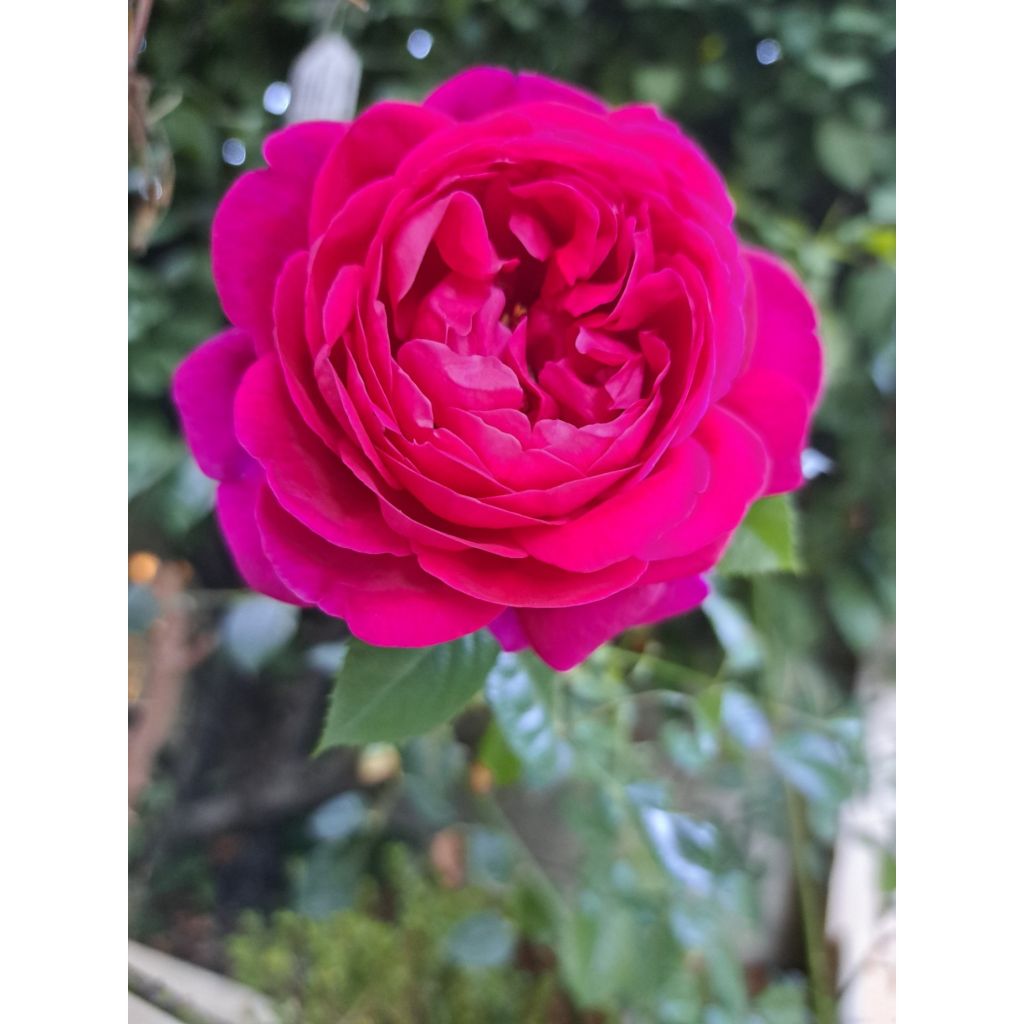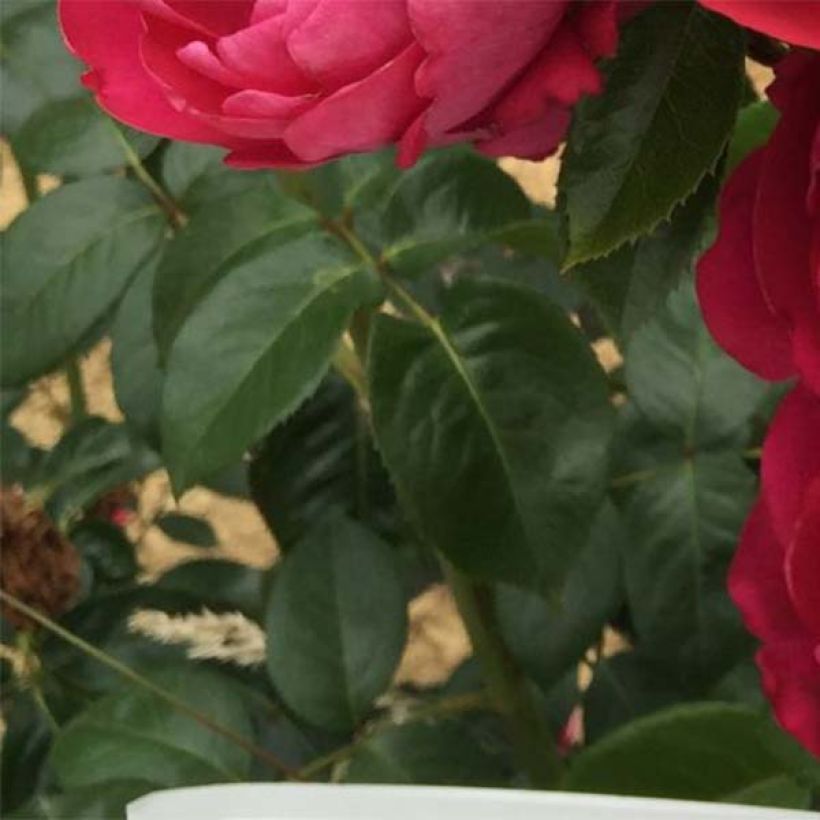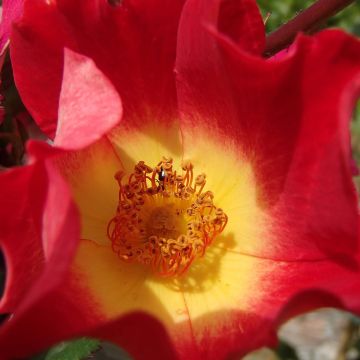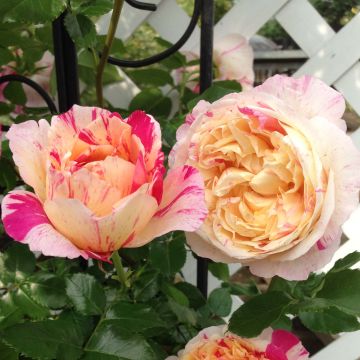

Rosa Jingle Bells


Rosa Jingle Bells


Rosa Jingle Bells


Rosa Jingle Bells


Rosa Jingle Bells


Rosa Jingle Bells
View more pictures
Hide images

Thierry P.

October flowering - image 75
Thierry P. • 84 FR

Thierry P.

September flowering - image 72 - Beautiful fragrant flower.
Thierry P. • 84 FR

Thierry P.

April flowering - image 38
Thierry P. • 84 FR

Thierry P.

June flowering - image 37
Thierry P. • 84 FR

Thierry P.

June flowering - image 36
Thierry P. • 84 FR

Thierry P.

November flowering - image 33
Thierry P. • 84 FR

Thierry P.

No text to translate.
Thierry P. • 84 FR

Thierry P.

April flowering - image 19
Thierry P. • 84 FR

Thierry P.

April flowering - image 18
Thierry P. • 84 FR

Thierry P.

April flowering - image 15 - Photo in the rain.
Thierry P. • 84 FR

Thierry P.

April flowering - image 14
Thierry P. • 84 FR

Thierry P.

April flowering - image 12
Thierry P. • 84 FR
Rosa Jingle Bells
Rosa Jingle Bells® Nirphabels
Thanks to the individuals (for order preparation and shipping), the rose bush I received appears to be healthy. Planted near the same variety, I am now patiently awaiting its recovery... or not?" Analysis and Revision: "Thanks to the individuals (for order preparation and shipping), the rose bush I received appears to be healthy. Planted near the same variety, I am now patiently awaiting its recovery... or not?" The translation accurately conveys the meaning and maintains the tone of the original text. No spelling or grammatical errors are found in the translation. The use of "rose bush" instead of "rosier" is appropriate in this context. The phrase "patiently awaiting its recovery" effectively captures the meaning of "j'attends maintenant patiemment la reprise". The inclusion of "or not?" at the end adds a touch of uncertainty and reflects the original intent of the text. Overall, the translation is linguistically correct and conveys the intended message accurately.
Thierry, 29/11/2023
Special offer!
Receive a €20 voucher for any order over €90 (excluding delivery costs, credit notes, and plastic-free options)!
1- Add your favorite plants to your cart.
2- Once you have reached €90, confirm your order (you can even choose the delivery date!).
3- As soon as your order is shipped, you will receive an email containing your voucher code, valid for 3 months (90 days).
Your voucher is unique and can only be used once, for any order with a minimum value of €20, excluding delivery costs.
Can be combined with other current offers, non-divisible and non-refundable.
Home or relay delivery (depending on size and destination)
Schedule delivery date,
and select date in basket
We guarantee the quality of our plants for a full growing cycle, and will replace at our expense any plant that fails to recover under normal climatic and planting conditions.
Description
The 'Jingle Bells' Rose should appeal to critics of large red-flowered roses. Its old-fashioned blooms are irresistible: round but beautifully curved, double but not heavy, they are a refined magenta red, doubled with pale pink and slightly fading over time. They open in richly nuanced clusters and with a sumptuous fragrance. This small bush is robust and adorned with beautiful dark green glossy foliage that is not very susceptible to rose diseases. Superb in a flowerbed and well suited to small spaces and container gardening, this romantic variety also makes a sensational cut flower.
'Jingle Bells' or 'Nirphabels'' is a modern shrub with large flowers related to hybrid tea roses, recently registered by NIRP International. This variety, which brings something new to the range of red roses, is very little known. It is a small, bushy, upright shrub reaching about 75cm (30in) in height and 60cm (24in) spread at maturity, with rapid growth in rich, moist soil. It produces long thorny branches that bear elegant foliage, composed of large glossy leaflets, dark green, which resist diseases if the growing conditions are adequate. This deciduous foliage falls in autumn. Throughout the summer, if faded flowers are removed, their pretty, barely double flowers appear in rounded cups composed of petal shells. Their colour is a magenta red without vulgarity, with pinker on the reverse. They are grouped in small clusters and carried at the tips of the current year's shoots or emerging on 2-year-old stems. Their perfume is pronounced, sweet and captivating. The flowering, perpetual, extends from June until the first frost.
This 'Jingle Bells' Rose, with its delicious roses and magnificent fragrance, deserves a prominent place: place it, for example, in groups of 3 plants in the centre of a small flowerbed, close to the house or in a beautiful pot on the terrace. Place silver baskets, perennial geraniums and nepetas at its feet, for example. It blends well in flowerbeds with light perennials and annuals such as baby's breath, lady's mantle, lamb's ears or tall foxgloves. White roses like 'Mémoire' or 'Virgo' accompany it. Its pairing with mauve or pink roses is also exquisite: cultivars like The Fairy, 'Blue Girl' or 'Claude Brasseur' will enhance its beautiful flowering without overshadowing it. Also, create bouquets with flowers for someone special to you.
Report an error about the product description
Rosa Jingle Bells in pictures




Plant habit
Flowering
Foliage
Botanical data
Rosa
Jingle Bells® Nirphabels
Rosaceae
Cultivar or hybrid
Rosa multiflora (Wrapped bare root, 4L/5L pot)
Planting and care
Choose a sunny or lightly shaded spot with well-worked soil that is not too heavy and has enough nutrients. Avoid planting in poor and excessively dry soils. Prepare the soil by crumbling it and adding an amendment, such as blood, fish and bone, at the bottom of the planting hole. After planting, water abundantly to remove air pockets and continue to water regularly for a few weeks to help the roots establish.
Pruning modern repeat flowering roses is important for flowering and should be done in three stages:
1. Regular maintenance pruning: During the season, regularly shorten the flowering branches and remove faded flowers along with their stem, leaving 2 or 3 leaves to encourage repeat flowering.
2. Preparatory autumn pruning: Lightly prune in preparation for the 'main' spring pruning. Note: This is not recommended in regions with cold winters as this could weaken the bush.
3. Spring pruning: In February-March, when the buds have become shoots 2 to 3 cm (1in) long, prune the young, strong branches to one-quarter of their length.
When pruning, always aim to remove dead wood, diseased branches, and weak shoots while opening up the centre of the bush. Retain the most vigorous branches, generally 3 to 6 well-positioned, to maintain an attractive habit. Always prune at a slant ½ cm or 1 cm (0in) above an outward-facing bud.
Roses may develop unsightly spots at the end of summer, but this is a natural occurrence and doesn't harm the rose's growth.
Planting period
Intended location
Care
-
, onOrder confirmed
Reply from on Promesse de fleurs
Similar products
Haven't found what you were looking for?
Hardiness is the lowest winter temperature a plant can endure without suffering serious damage or even dying. However, hardiness is affected by location (a sheltered area, such as a patio), protection (winter cover) and soil type (hardiness is improved by well-drained soil).

Photo Sharing Terms & Conditions
In order to encourage gardeners to interact and share their experiences, Promesse de fleurs offers various media enabling content to be uploaded onto its Site - in particular via the ‘Photo sharing’ module.
The User agrees to refrain from:
- Posting any content that is illegal, prejudicial, insulting, racist, inciteful to hatred, revisionist, contrary to public decency, that infringes on privacy or on the privacy rights of third parties, in particular the publicity rights of persons and goods, intellectual property rights, or the right to privacy.
- Submitting content on behalf of a third party;
- Impersonate the identity of a third party and/or publish any personal information about a third party;
In general, the User undertakes to refrain from any unethical behaviour.
All Content (in particular text, comments, files, images, photos, videos, creative works, etc.), which may be subject to property or intellectual property rights, image or other private rights, shall remain the property of the User, subject to the limited rights granted by the terms of the licence granted by Promesse de fleurs as stated below. Users are at liberty to publish or not to publish such Content on the Site, notably via the ‘Photo Sharing’ facility, and accept that this Content shall be made public and freely accessible, notably on the Internet.
Users further acknowledge, undertake to have ,and guarantee that they hold all necessary rights and permissions to publish such material on the Site, in particular with regard to the legislation in force pertaining to any privacy, property, intellectual property, image, or contractual rights, or rights of any other nature. By publishing such Content on the Site, Users acknowledge accepting full liability as publishers of the Content within the meaning of the law, and grant Promesse de fleurs, free of charge, an inclusive, worldwide licence for the said Content for the entire duration of its publication, including all reproduction, representation, up/downloading, displaying, performing, transmission, and storage rights.
Users also grant permission for their name to be linked to the Content and accept that this link may not always be made available.
By engaging in posting material, Users consent to their Content becoming automatically accessible on the Internet, in particular on other sites and/or blogs and/or web pages of the Promesse de fleurs site, including in particular social pages and the Promesse de fleurs catalogue.
Users may secure the removal of entrusted content free of charge by issuing a simple request via our contact form.
The flowering period indicated on our website applies to countries and regions located in USDA zone 8 (France, the United Kingdom, Ireland, the Netherlands, etc.)
It will vary according to where you live:
- In zones 9 to 10 (Italy, Spain, Greece, etc.), flowering will occur about 2 to 4 weeks earlier.
- In zones 6 to 7 (Germany, Poland, Slovenia, and lower mountainous regions), flowering will be delayed by 2 to 3 weeks.
- In zone 5 (Central Europe, Scandinavia), blooming will be delayed by 3 to 5 weeks.
In temperate climates, pruning of spring-flowering shrubs (forsythia, spireas, etc.) should be done just after flowering.
Pruning of summer-flowering shrubs (Indian Lilac, Perovskia, etc.) can be done in winter or spring.
In cold regions as well as with frost-sensitive plants, avoid pruning too early when severe frosts may still occur.
The planting period indicated on our website applies to countries and regions located in USDA zone 8 (France, United Kingdom, Ireland, Netherlands).
It will vary according to where you live:
- In Mediterranean zones (Marseille, Madrid, Milan, etc.), autumn and winter are the best planting periods.
- In continental zones (Strasbourg, Munich, Vienna, etc.), delay planting by 2 to 3 weeks in spring and bring it forward by 2 to 4 weeks in autumn.
- In mountainous regions (the Alps, Pyrenees, Carpathians, etc.), it is best to plant in late spring (May-June) or late summer (August-September).
The harvesting period indicated on our website applies to countries and regions in USDA zone 8 (France, England, Ireland, the Netherlands).
In colder areas (Scandinavia, Poland, Austria...) fruit and vegetable harvests are likely to be delayed by 3-4 weeks.
In warmer areas (Italy, Spain, Greece, etc.), harvesting will probably take place earlier, depending on weather conditions.
The sowing periods indicated on our website apply to countries and regions within USDA Zone 8 (France, UK, Ireland, Netherlands).
In colder areas (Scandinavia, Poland, Austria...), delay any outdoor sowing by 3-4 weeks, or sow under glass.
In warmer climes (Italy, Spain, Greece, etc.), bring outdoor sowing forward by a few weeks.








































